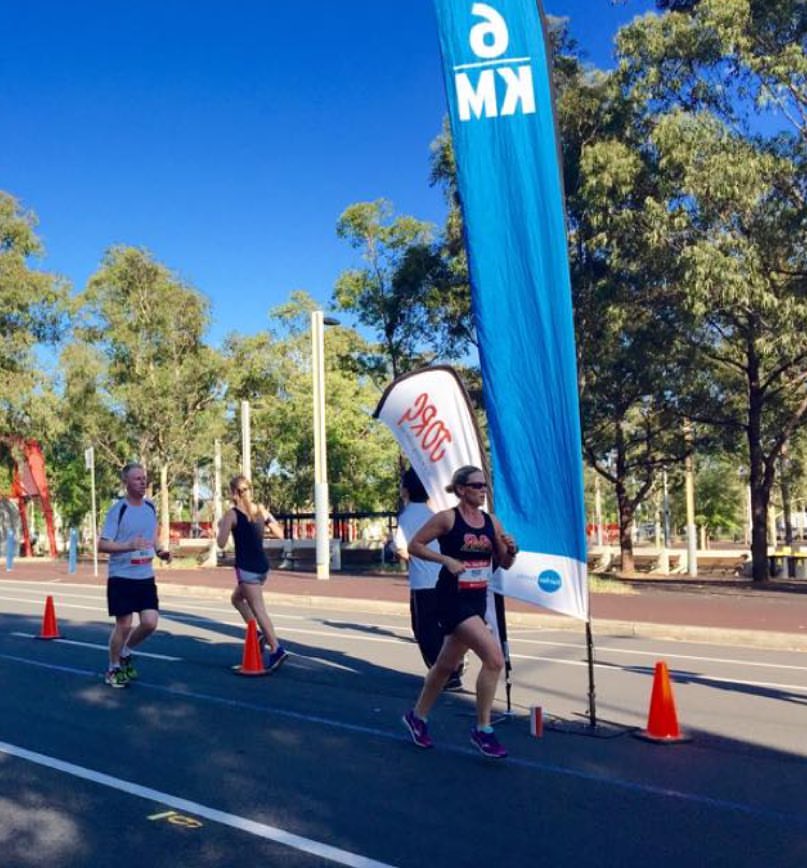As I enter the taper period for my fourth marathon I thought I would write down how to carb-load successfully. I remember all too clearly the feeling of hitting the “wall” from my first half marathon where I just wanted to lie down and have a nap at the 17k mark. Fast-forward 12 more half marathons, 3 marathons and a sports nutrition qualification, it turns out carb loading is much more than a bowl of pasta the night before a race.
For races lasting longer than 1.5 hours such as a marathon or half marathon, it’s beneficial to “carbohydrate load” for the 2-3 days before your race. The carbs are stored as glycogen in your muscles and liver. During the full or half marathon you will burn both fat and glycogen stores for energy, but it is harder for your body to convert fat to fuel. The goal is to arrive at the start line with your body’s glycogen stores full from carbohydrates to delay fatigue and performance decline. A full tank of glycogen and regular carbohydrate and fluid intake during the race will help you avoid hitting “the wall”. For it to work properly the carb load needs to be combined with an exercise taper as well.
Start your carbohydrate load 2-3 days before the race. You can’t fill your muscles with glycogen from just one meal, so a big pre-race pasta is not enough. For a Sunday marathon, I start on Thursday. For a Sunday half marathon I start on Friday. Carbohydrates should become about 70% of your diet. You don’t eat more during the load, you just replace protein, fibre and fat with carbohydrate. Be smart about your choice of carbs – although lasagne is delicious it’s very high in fat and protein so you’d be better off choosing pasta with a tomato based sauce. I prefer to make my dinner smaller and my lunch bigger on the day before the event so I have plenty of time to digest it.
You should be targeting between 8-12 grams of carbohydrate per kilo of body weight over the carb load period. So a 60 kg runner would need to consume between 480 and 720 grams of carbs over the day. As a guide 4 slices of white bread contain about 50 grams of carbs. Personally I can only manage to get in closer to the 8 grams per kilo target, the 12g/kg guide is more for ultra endurance events like ironman. If it’s your first time carb loading I’d suggest sticking to the lower end of the range. I add in some Gatorade and fruit juices to help top up my stores as I struggle to eat enough carbs otherwise.
The carbs you choose should be low in fibre to reduce the chances of getting an upset stomach during the race. This is the time to choose white bread, rice or pasta over wholemeal. You can go back to your quinoa after the marathon. You can also enjoy some of the foods you might not normally eat such as a crumpet with honey.
You might find you gain some weight, this is because the glycogen stores water with it, which helps ensure you are well hydrated to start the race. You’ll use this water during the race so don’t worry about the water weight – think of yourself as a camel! Your pee before you start the race should be light in colour to show that you are adequately hydrated.
The AIS website is very useful in terms of figuring out how many carbs are in a serve.
http://www.ausport.gov.au/ais/nutrition/factsheets/basics/carbohydrate__how_much
The following diet is suitable for a 60kg runner aiming to carbohydrate load:
| Breakfast | 1 cup of low-fibre breakfast cereal like cornflakes with 1/2 cup of reduced fat milk 1 medium banana 250ml orange juice 1 cappuccino with skim milk |
| Snack | Toasted muffin with jam 1 cappuccino with skim milk |
| Lunch | 1 sandwiches (2 slices of bread) with your choice of filling 200g tub of low-fat fruit yoghurt 600ml sports drink |
| Snack | Crumpet with honey 500ml sports drink Banana |
| Dinner | 1 cup of pasta sauce with 1 cup of cooked pasta 250 ml apple juice |
This sample plan provides approximately 10,153 kJ, 427 g carbohydrate, 74 g protein and 42 g fat. This is not an exact plan, you might need to consume more or less depending on your weight, sex and training volume.
Wishing you all the best on your 42.2 kilometre victory lap – you’ve done the work, now enjoy the run!
Prepared by
Rachel Eagleton, Nutritionist
Rachel is a university qualified nutritionist with two teenage children. Rachel just run the New York City marathon which will be her fourth marathon. Rachel blogs at nourishd.co and www.facebook.com/nourshd. Rachel’s approach to nutrition is about taking out what you don’t need and focussing on healthy eating habits for the whole family.
References
Bourke, L (2010) Clinical Sports Nutrition 4rd edition. Mc Graw Hill
Australian Institute of Sport Carbohydrate Loading Factsheet
Meal plan calculated on Foodzone

